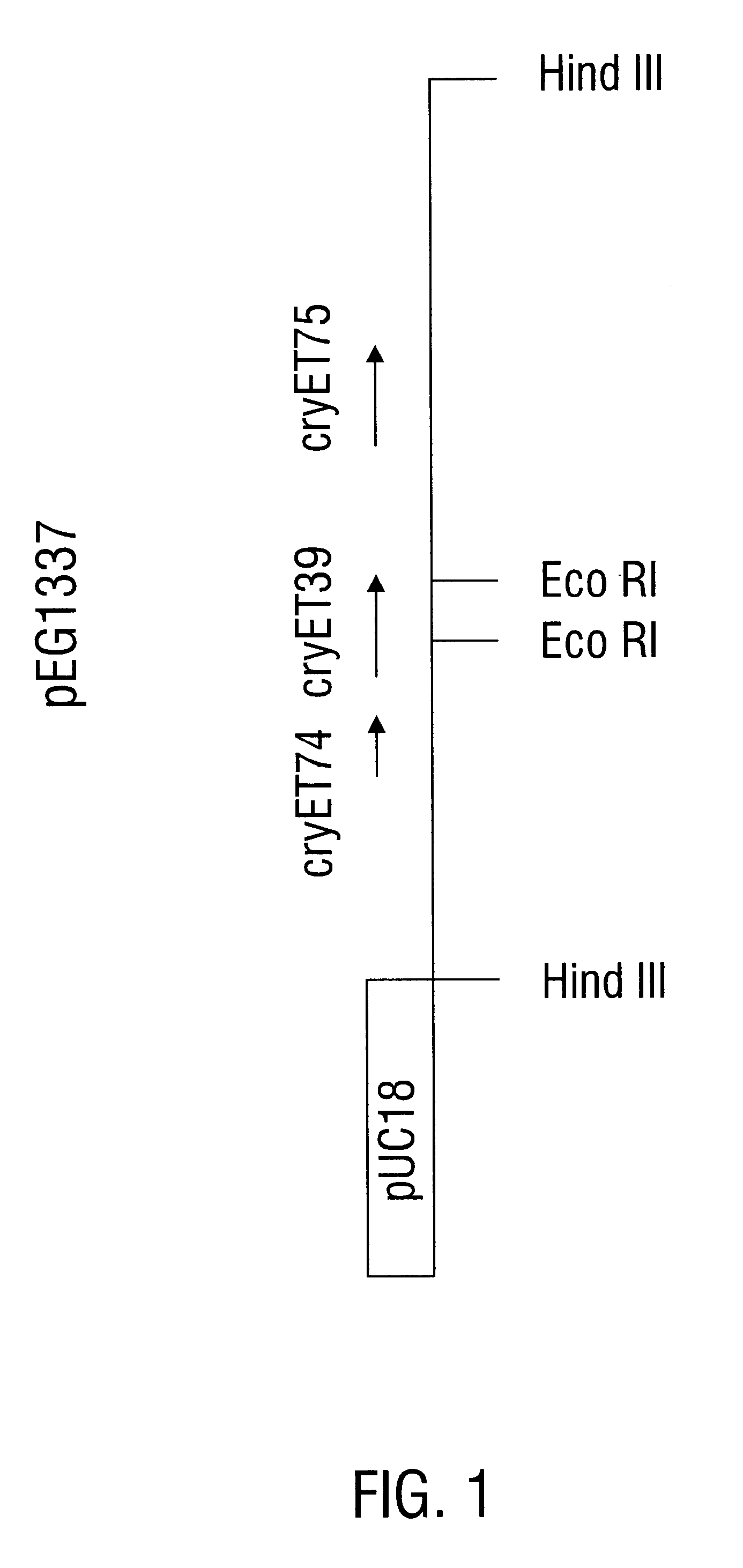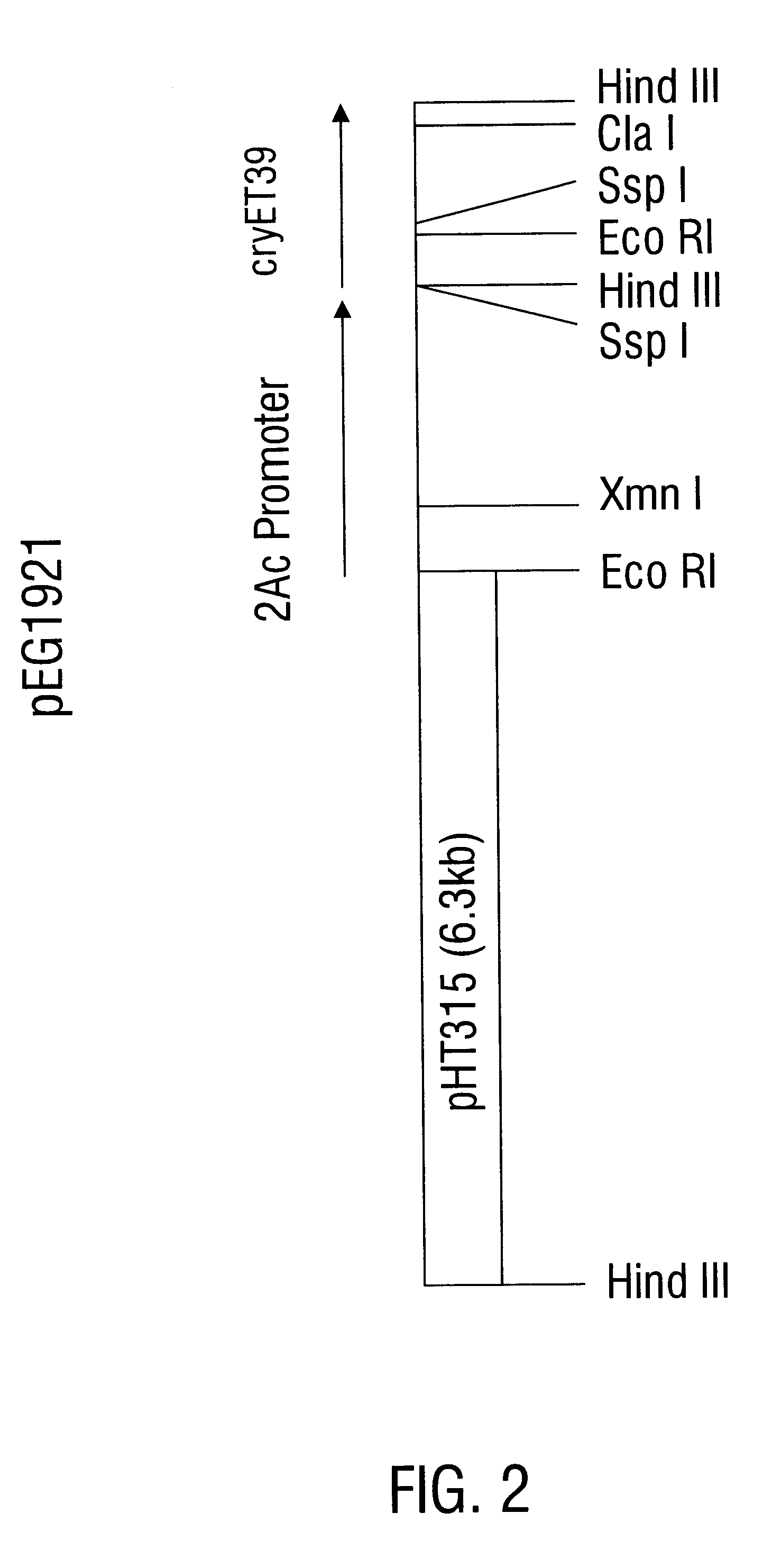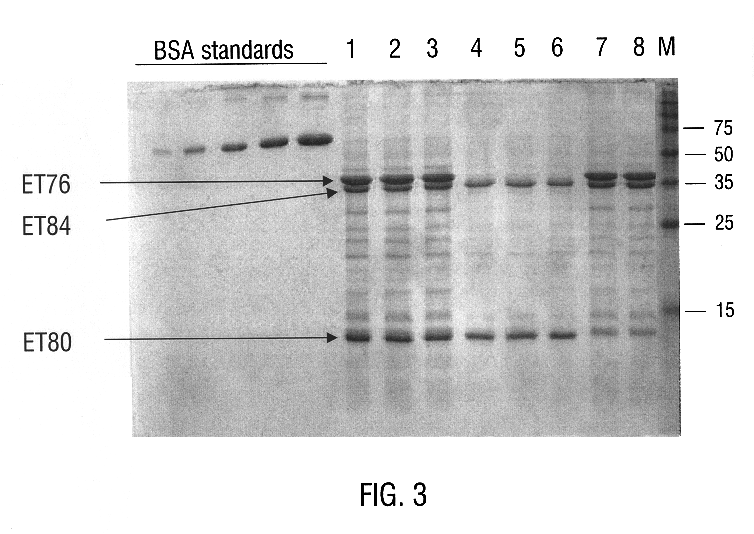Coleopteran-toxic polypeptide compositions and insect-resistant transgenic plants
a technology of toxic polypeptides and transgenic plants, applied in the field of molecular biology, can solve the problems of insect death, insect feeding cease, insect toxic crystal proteins, etc., and achieve the effect of convenient storag
- Summary
- Abstract
- Description
- Claims
- Application Information
AI Technical Summary
Benefits of technology
Problems solved by technology
Method used
Image
Examples
example 1
5.1 Example 1
Isolation of B. thuringiensis Strains EG4550 and EG5899
Crop dust samples were obtained from various sources throughout the United States and abroad, typically from grain-storage facilities. The crop dust samples were treated and spread on agar plates to isolate individual Bacillus-type colonies, e.g., B. thuringiensis, as described in U.S. Pat. No. 5,187,091, specifically incorporated herein by reference in its entirety. Phase-contrast microscopy was used to visually identify cells with crystalline inclusions in the colonies that grew after this treatment. Crystal-producing strains were then characterized by modified Eckhardt agarose gel electrophoresis as described by Gonzalez et al., (1982). This procedure allows the visualization of the array of native plasmids in a B. thuringiensis strain. The plasmid arrays can be compared to those of known serovars of B. thuringiensis to facilitate the identification of wild-type strains (Carlton and Gonzalez, 1985).
Strain EG4550 ...
example 2
5.2 Example 2
Evaluation of the Crystal Proteins of EG4550 and EG5899
Strains EG4550 and EG5899 were grown in C2 sporulation medium (Donovan, et al., J. Biol. Chem., 263:561-567, 1988) for three days at 30.degree. C. during which the cultures grew to stationary phase, sporulated and lysed, releasing the protein inclusions into the medium. The cultures were centrifuged to harvest cell pellets containing the spores and crystals. The pellets were washed by suspension in a solution of 0.005% Triton X-100.RTM. and centrifuged. The washed pellets were resuspended at one-tenth the original volume in 0.005% Triton X-100.RTM..
Crystal proteins were solubilized from the spores-crystals suspensions by incubating in solubilization buffer [0.14 M Tris-HCl pH 8.0, 2% (wt. / vol.) sodium dodecyl sulfate (SDS), 5% (vol. / vol.) 2-mercaptoethanol, 10% (vol. / vol.) glycerol, and 1% bromphenol blue] at 100.degree. C. for 5 min. The solubilized crystal proteins were size-fractionated by SDS-PAGE using a gel wi...
example 3
5.3 Example 3
Characterization of the CryET39 Crystal Protein of EG4550
The NH.sub.2 -terminal sequence of the approximately 45-kDa protein of EG4550, designated CryET39, was determined. A sporulated culture of EG4550 was washed and resuspended. The crystal proteins in the suspension were solubilized and run on a 10% acrylamide gel following the procedures for SDS-PAGE analysis. After electrophoresis the proteins were transferred to a BioRad PVDF membrane using standard western blotting procedures. Following transfer the membrane was rinsed 3.times. in distilled H.sub.2 O and stained for 1 min using Amido Black 1013 (Sigma Chemical Co., St. Louis, Mo.). The filter was destained for 1 min in 5% acetic acid and then rinsed in 3 changes of distilled H.sub.2 O. The portion of the filter containing the approximately 45-kDa CryET39 band was excised with a razor blade. This procedure resulted in a pure form of CryET39 being obtained as a protein band blotted onto a PVDF membrane (BioRad, Her...
PUM
| Property | Measurement | Unit |
|---|---|---|
| Fraction | aaaaa | aaaaa |
| Percent by mass | aaaaa | aaaaa |
| Volume | aaaaa | aaaaa |
Abstract
Description
Claims
Application Information
 Login to View More
Login to View More - R&D
- Intellectual Property
- Life Sciences
- Materials
- Tech Scout
- Unparalleled Data Quality
- Higher Quality Content
- 60% Fewer Hallucinations
Browse by: Latest US Patents, China's latest patents, Technical Efficacy Thesaurus, Application Domain, Technology Topic, Popular Technical Reports.
© 2025 PatSnap. All rights reserved.Legal|Privacy policy|Modern Slavery Act Transparency Statement|Sitemap|About US| Contact US: help@patsnap.com



